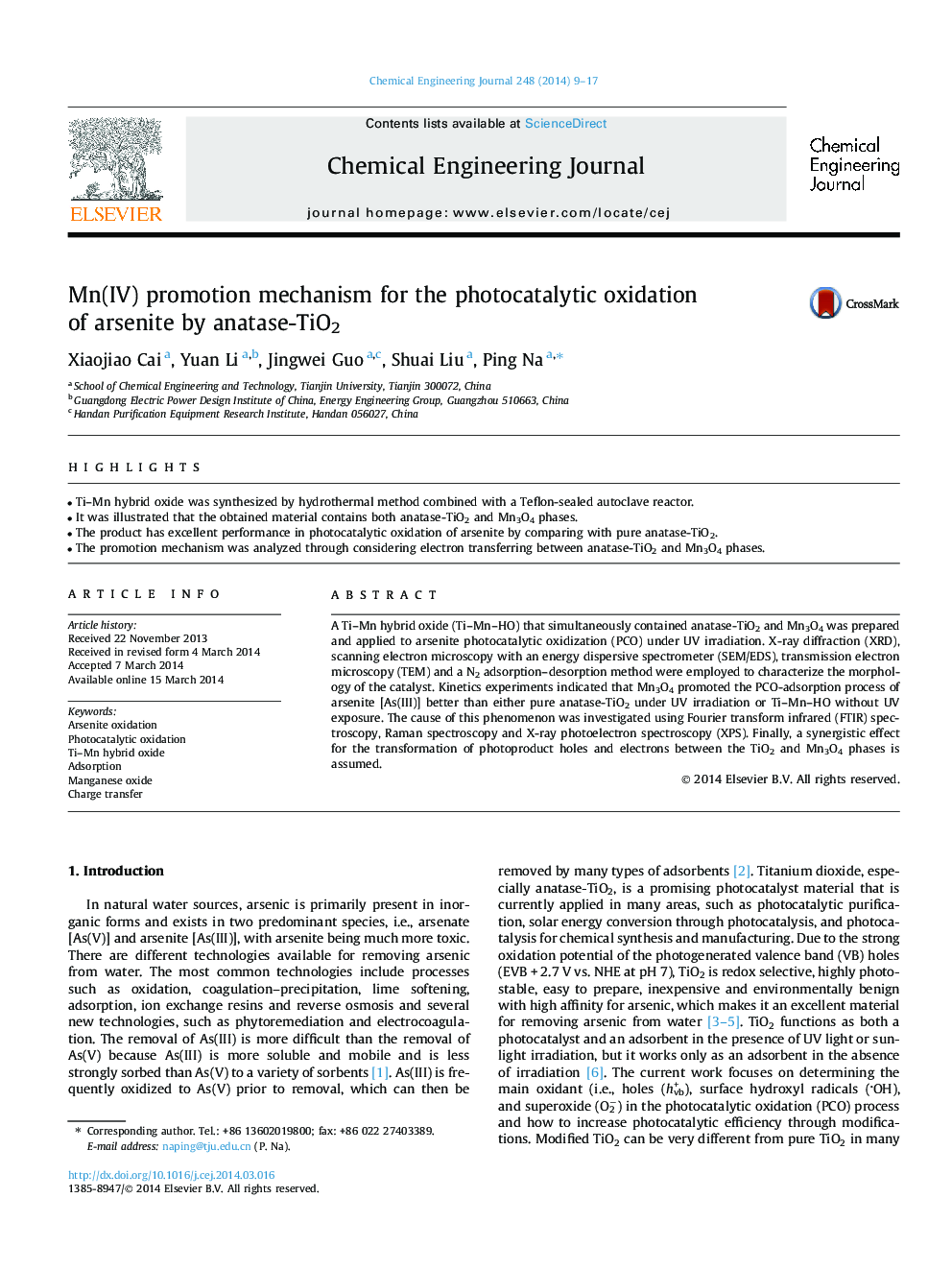| Article ID | Journal | Published Year | Pages | File Type |
|---|---|---|---|---|
| 147517 | Chemical Engineering Journal | 2014 | 9 Pages |
•Ti–Mn hybrid oxide was synthesized by hydrothermal method combined with a Teflon-sealed autoclave reactor.•It was illustrated that the obtained material contains both anatase-TiO2 and Mn3O4 phases.•The product has excellent performance in photocatalytic oxidation of arsenite by comparing with pure anatase-TiO2.•The promotion mechanism was analyzed through considering electron transferring between anatase-TiO2 and Mn3O4 phases.
A Ti–Mn hybrid oxide (Ti–Mn–HO) that simultaneously contained anatase-TiO2 and Mn3O4 was prepared and applied to arsenite photocatalytic oxidization (PCO) under UV irradiation. X-ray diffraction (XRD), scanning electron microscopy with an energy dispersive spectrometer (SEM/EDS), transmission electron microscopy (TEM) and a N2 adsorption–desorption method were employed to characterize the morphology of the catalyst. Kinetics experiments indicated that Mn3O4 promoted the PCO-adsorption process of arsenite [As(III)] better than either pure anatase-TiO2 under UV irradiation or Ti–Mn–HO without UV exposure. The cause of this phenomenon was investigated using Fourier transform infrared (FTIR) spectroscopy, Raman spectroscopy and X-ray photoelectron spectroscopy (XPS). Finally, a synergistic effect for the transformation of photoproduct holes and electrons between the TiO2 and Mn3O4 phases is assumed.
